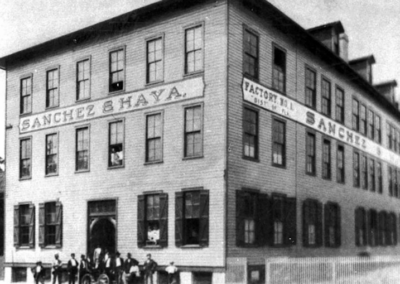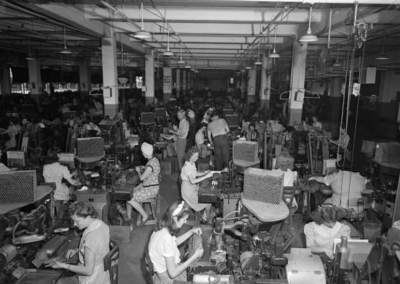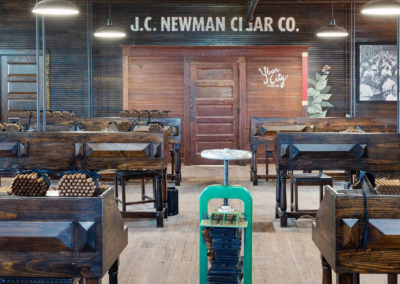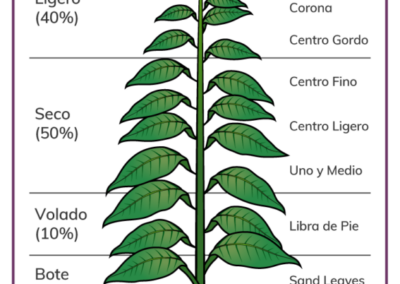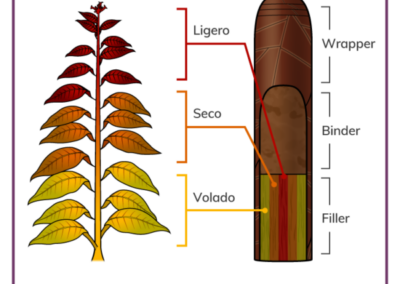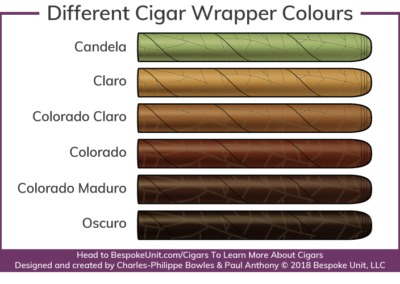Anna in the Tropics
Dramaturgy Booklet
by Melody Contreras
Dive into the history of Ybor City, Cigar Factories, Cigars, Lectors and Cuba below!
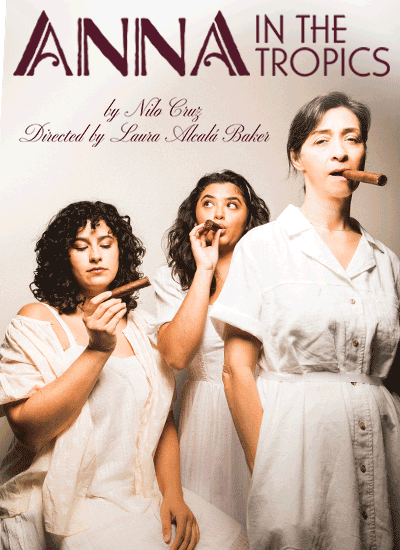
Ybor City
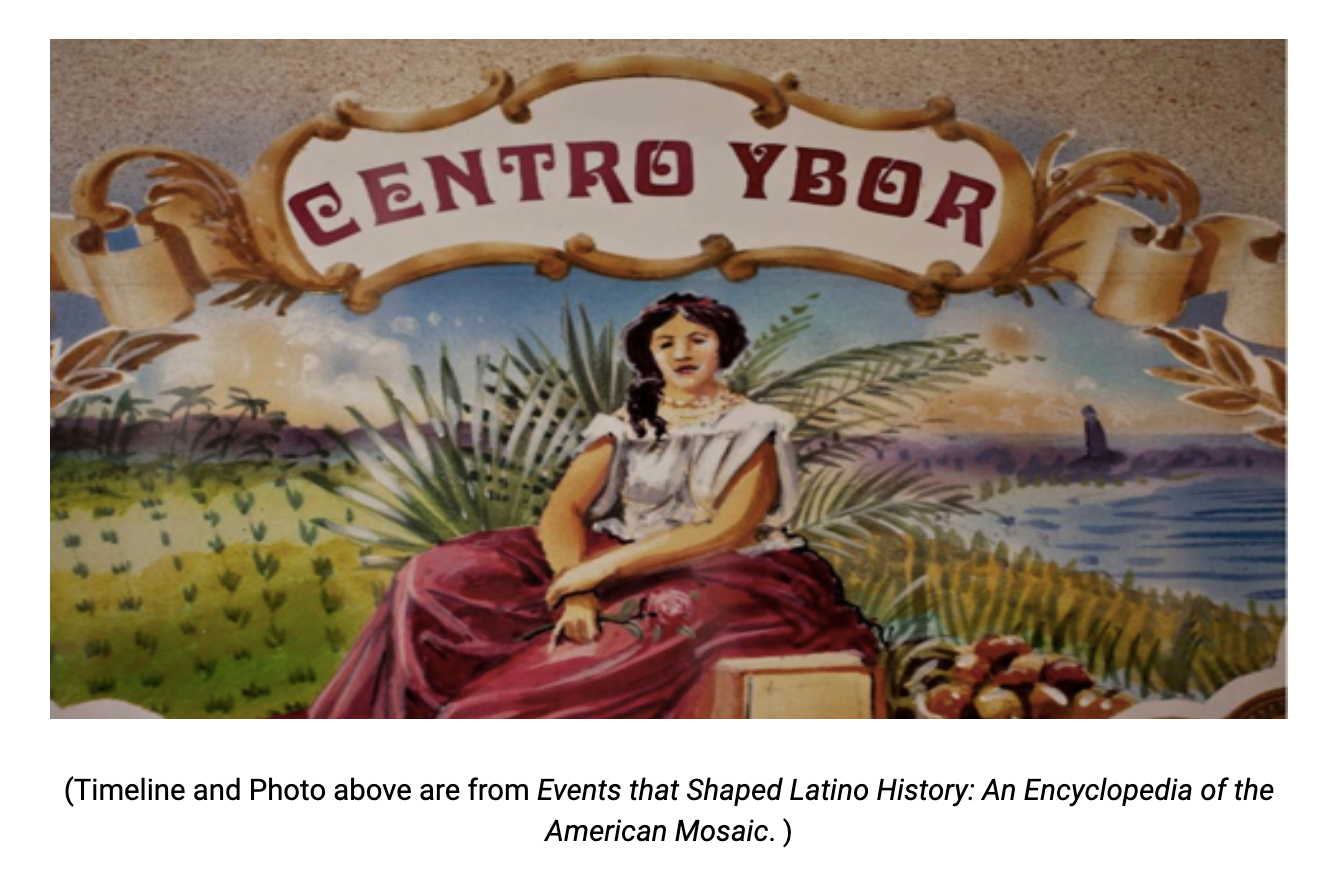
1869: Cigar manufacturers relocate Cuban cigar factories to Key West due to Instability in Cuba and the U.S. Tariffs.
1884: Key West cigar industries reach nearly 100 cigar factories and more than 3,000 cigar factory workers.
1885: Businessman, Vincente Martines Ybor and Ignacio Haya purchase land on Tampa to relocate factories and workers.
1891: Jose Marti makes more than 20 visits to Ybor City to Establish local revolutionary clubs and raise funds for the independence movement.
1891-1904: Cigar workers Establish the 5 core mutual aid societies, locally termed centros or sociedades, to support community workers.
1895-1898: Cigar workers support the Cuban War for Independence and continue to donate funds.
1908: The largest fire in Tampa history burns a large part of Ybor City.
1909-1920: Factory owners and cigar factory workers rebuild Ybor City, creating large brick structures that resemble Cuban and Spanish architecture.
1920: Ybor City and West Tampa reach nearly 70,000 population.
1920-1930: Ybor City cigar industry reaches its pinnacle with more than 500 million cigars produced in more than 200 factories.
1930-1940: The Great Depression leads to the decline of the cigar industry.
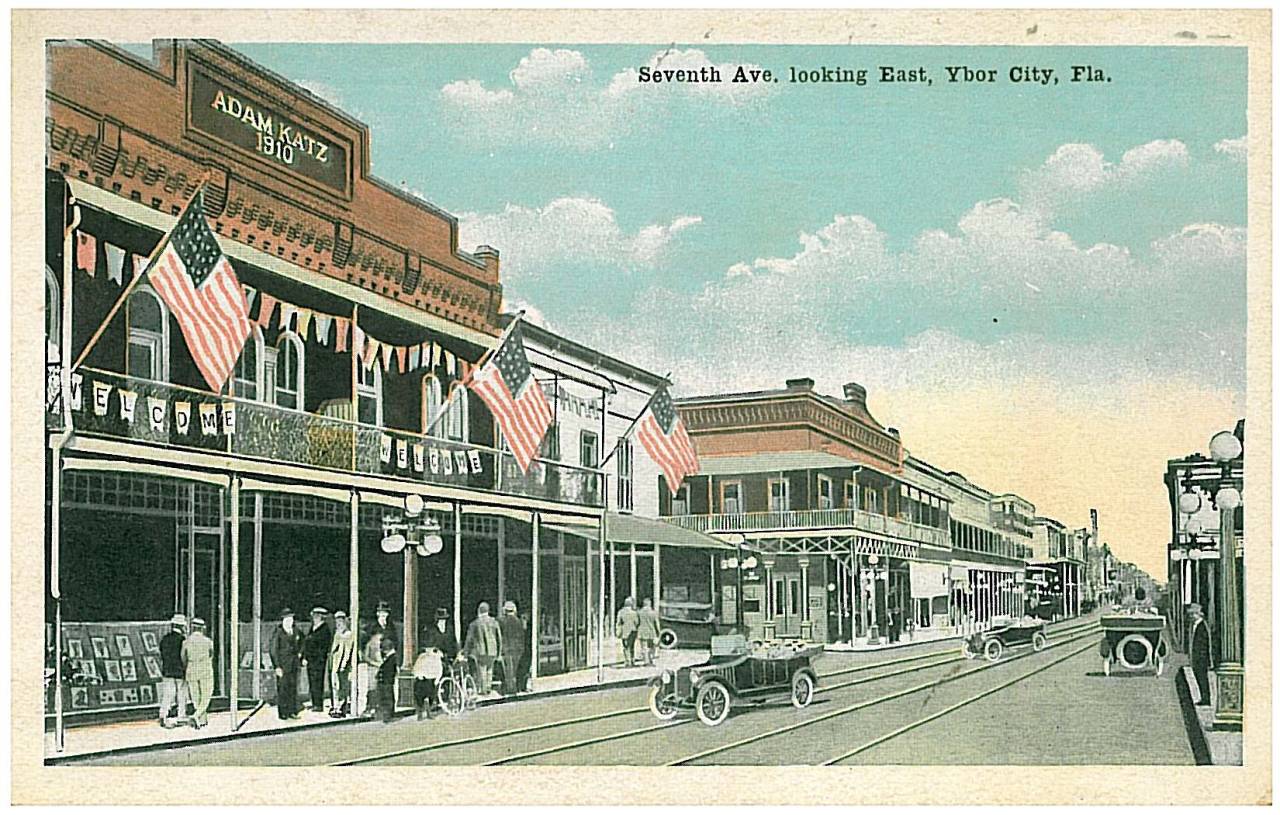
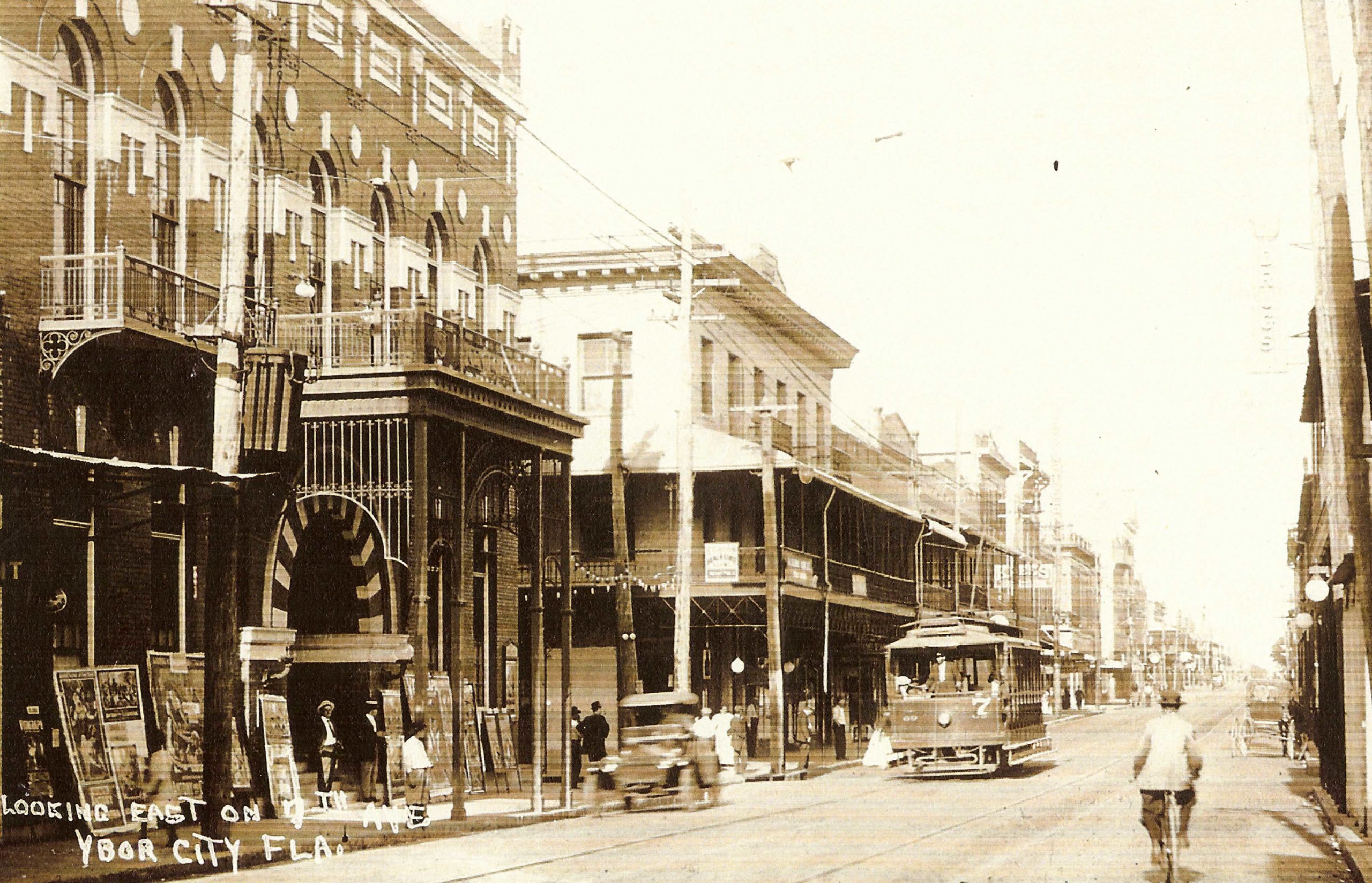
Immigration
- By WW2 Ybor City was the 2nd largest spanish speaking city in the U.S.
- During the early 20th century the 2 biggest Immigrant populations were Italians and Cubans.
- Though many of the residents were Hispanic, immigrating from Spain or Spanish Cuba, there were also Italian, German, Rumanian Jewish, and Chinese immigrants in Ybor City.


Cigar Factories
Ybor City’s top factories made high-quality, hand-rolled cigars, each crafted by a skilled artisan using tobacco from Vuelta Abajo.
Origin
- It is believed that a form of smoking cigars originated in the Mayan culture and that a form of smoking was used highly in ritual processes.
- In 2011, a Mayan container with the inscription, “the home of its tobacco” was tested and nicotine was found inside, proving that tobacco was stored in the jar. It was the first physical evidence of tobacco use by the Mayans.
- An ancient Mayan pot from the 10th century depicts a Mayan man smoking a cigar. (Image on the left).
- The blowing of smoke is related to tobacco use by Native North Americans, who blew smoke in the four directions during ceremonies.
Taíno
- Taínos are originally from the territory they called “Borinken” islands which spanned from Cuba, Hispaniola, Puerto Rico, the US and British Virgin Islands and the far southeast of Aruba.
- The name Cuba is said to derive from the Taíno cubao – “where fertile land is abundant”.
- Taínos met Columbus when he first stepped onto Cuban shores. He spoke of them quite highly, saying that “They are the best people in the world…[they] are gentle and always laughing.” Then also saying, “…They should be good servants.”
- Taínos and their culture still are around today.
- More article detailing the historical erasure of Taínos in documents and their survival today:



- Reading aloud began in Cuba in 1865.
- “The first lectores were cigar workers who took turns reading aloud every half hour, and their coworkers compensated them for the time lost from their jobs.”
- Even though radios were introduced in the 1920s, it was preferred by the workers to have a lector reading to them.
- Lectors had to audition in front of cigar workers before getting hired
- Qualifications: Strong Voice, Clarity of Speech, Reading with their Heart was a MUST
- Workers would pay lectors weekly from their paychecks to have them read to.
- Each worker would give about 25 to 50 cents of their weekly salary to the lector.
Lectors are a crucial piece of the factories because they shared information that led to workers in Cuba and the US to seek out labor reform from the work conditions placed upon them.
Major cigar factory worker/lector strikes:
Lectors were a social and political match that lit workers with the consciousness of what was happening and their rights. They were seen as radical and pro-union that some factory owners did not like them. Due to this, some factory owners were the ones who picked out the texts that laborers would read to the workers.
The first wave of the cigar strike in 1920 was due to the blame of lectors unionizing and radicalizing cigar factory workers.
The last wave of the cigar strike began on November 28, 1931 in Ybor City. This strike occurred because lectors were banned in cigar factories and they wanted to protect their rights for them. This meeting occurred in front of city hall and resulted in confrontation by police officers. 24 cigar workers being arrested. Days after the altercation, on November 1931, 7,000 workers stopped working and took the streets of Ybor City together. They lasted three whole days and held out till December 7. Unfortunately, this led to cigar manufacturers blaming street violence on the lectors and removing them from the factories all together.


Cuba
Between 1868 and 1898, the United States admitted approximately 55,700 Cuban immigrants.
- Most were either political refugees or skilled workers in cigar manufacturing.
- By the end of the 19th century, Cubans established sizable communities in Key West and Tampa, Florida; New York City; and New Orleans.
In 1901, the Platt amendment was passed, giving Cuba their freedom to be their own government while still remaining tied to the US.
Platt Amendment:
- The U.S. withdrew their troops stationed in Cuba
- The U.S. had unlimited ability to intervene in Cuban affairs for purpose of preserving Cuban Independence
- Prevented Cuba to trade their land with another country
- Cuba became a naval base for U.S. ships
Cuba in the 1920s was seen as “an exotic and permissive playground”
The U.S.’s prohibition era was the perfect marketing strategy for Cuba to encourage tourists to visit. A bacardi ad encouraged U.S. Americans to drink their alcohol legally in Cuba.
During the 1920s, many rich Americans and also bohemian Americans traveled to Cuba. Many notable people traveled to Cuba for a range of activities like gambling, horse racing, golfing and country clubbing.
Notable American celebrities that traveled to Cuba: Ernest Hemingway, Frank Sinatra,
Traveling to the U.S. before the revolution of Cuba (1958) was common. Miami is close to Cuba so many people would move to the U.S. looking for better opportunities. Many wealthy families also sent their children to study in the U.S. during this time.



References:
Ybor City Map Images: https://southernspaces.org/2009/preserving-memory-ybor-city-florida/
Ybor City Postcard: https://ufdc.ufl.edu/MH00000892/00001/images
Ybor City Town Image: https://tampamagazines.com/the-history-of-ybor/
Cigar Rolling Quote: https://us.egmcigars.com/blogs/the-cuban-cigars-blog-by-egm-cigars/how-to-roll-a-cigar-a-quick-guide-on-the-different-ways-to-make-a-cigar
History of Cigars: https://lapatiala.com/history-of-cigars/
Cigar Factory Image 1: https://sah-archipedia.org/buildings/FL-01-057-0029
Cigar Factory Image 2: https://www.google.com/url?q=https://www.anoisewithin.org/the-role-of-lectors-in-cuban-cigar-factories/&sa=D&source=docs&ust=1676485022827448&usg=AOvVaw0XuKd2cRDYQC_VtKM_GJ8_
Cigar Factory Image 3: https://www.thejaxsonmag.com/article/jacksonvilles-forgotten-cuban-cigar-industry-page-2/
Cigar Factory Image 4: https://www.smithsonianmag.com/travel/last-cigar-factory-tampa-180978323/
Mayan Image : https://www.smokingpipes.com/smokingpipesblog/single.cfm/post/the-mayans-tobacco
Taíno Image: https://www.don-collins.com/post/the-taino-indians-planted-all-tobacco-from-cuba-to-aruba
Lector Image: https://rarehistoricalphotos.com/factory-lectors-1910/
Cigar Factory Strike Image 1: https://tampahistorical.org/items/show/132#&gid=1&pid=1
Cigar Factory Strike Image 2: https://www.floridamemory.com/items/show/10834
Immigration Data: https://www.migrationpolicy.org/article/cuban-migration-postrevolution-exodus-ebbs-and-flows

Administrative Office
3759 N. Ravenswood Avenue
Suite 124
Chicago, IL 60613
773.244.8119
Performance Venue
Theater Wit
1229 W. Belmont Ave.
Chicago, Illinois 60657
Box Office: 773.975.8150
Stay Informed
Get the latest news and special offers by signing up for our email list.
sign up today


